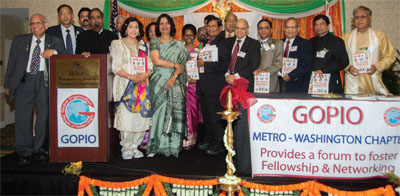
Makar Sankranti is celebrated on a fixed date that is 14 January every year. It also marks the termination of the Winter season and the beginning of a new harvest season.
It is dedicated to Lord Sun. It also refers to a specific solar day in the Hindu calendar. On this auspicious day, the sun enters the zodiac sign of Capricorn or Makar which marks the end of winter month and start of longer days. This is the beginning of the month of Magh. To recompense for the distinction that happens due to the revolution around the sun, every 80 years the day of Sankranti is deferred by one day. From the day of Makar Sankranti, the sun begins its northward journey or Uttarayan journey. Therefore, this festival is also known as Uttarayan.
History
Sankranti is deemed a Deity. As per the legend Sankranti killed a devil named Sankarasur. The day next to Makar Sankrant is called Karidin or Kinkrant. On this day, Devi slayed the devil Kinkarasur.The information of Makar Sankranti is available in Panchang. The Panchang is the Hindu Almanac that provides information on the age, form, clothing, direction and movement of Sankranti.
Importance
Makar Sankranti is the date from which Northward movement of the sun begins. The period from Karka Sankranti to Makar Sankranti is known as the Dakshinayan.
Unknown traditions
According to the scriptures, Dakshinayan symbolizes as the night of god or the sign of negativity and Uttarayan is considered as a symbol of day of Gods or a sign of positivity. Since on this day sun starts its journey towards the north so, people take a holy dip in Ganga, Godavari, Krishna, Yamuna River at holy places, chant mantras etc. Normally the sun affects all the zodiac signs, but it is said that the entry of the sun in the zodiac sign of Cancer and Capricorn religiously is very fruitful.
Before Makar Sankranti, the sun is in the Southern Hemisphere. For this reason, in India, in winter nights are longer and days are smaller. But with the Makar Sankranti, sun starts its journey towards Northern Hemisphere and so, days will be longer and nights smaller.
On the occasion of Makar Sankranti, people worship the sun God in various forms. Any meritorious deeds or donation during this period establishes more fruitful.
Performing haldi kumkum ceremony in a way that invokes the waves of quiescent Adi – Shakti in the Universe to get triggered. This helps in generating impression of Sagun devotion on the mind of a person & enhances the Spiritual emotion to God.
Kite flying is an important aspect of the celebrations
People fly kites and prepare traditional sweets like gazak for this festival that marks the arrival of spring. In different parts of the country, Makar Sankranti is celebrated in different ways. In some areas, people exchange sweets and greetings, while others take holy dip in the river.
Kite flying is an intrinsic part of Makar Sankranti celebrations. Colourful kites adorn the sky from the morning of Makar Sankranti.
This day also marks the end of winter and celebrates the harvest of the Rabi crop. According to some beliefs, the tradition of kite flying on Makar Sankranti is being carried out so that people are exposed to the sun rays. Sunning is believed to get rid of the skin infections and illnesses associated with winter.





Be the first to comment